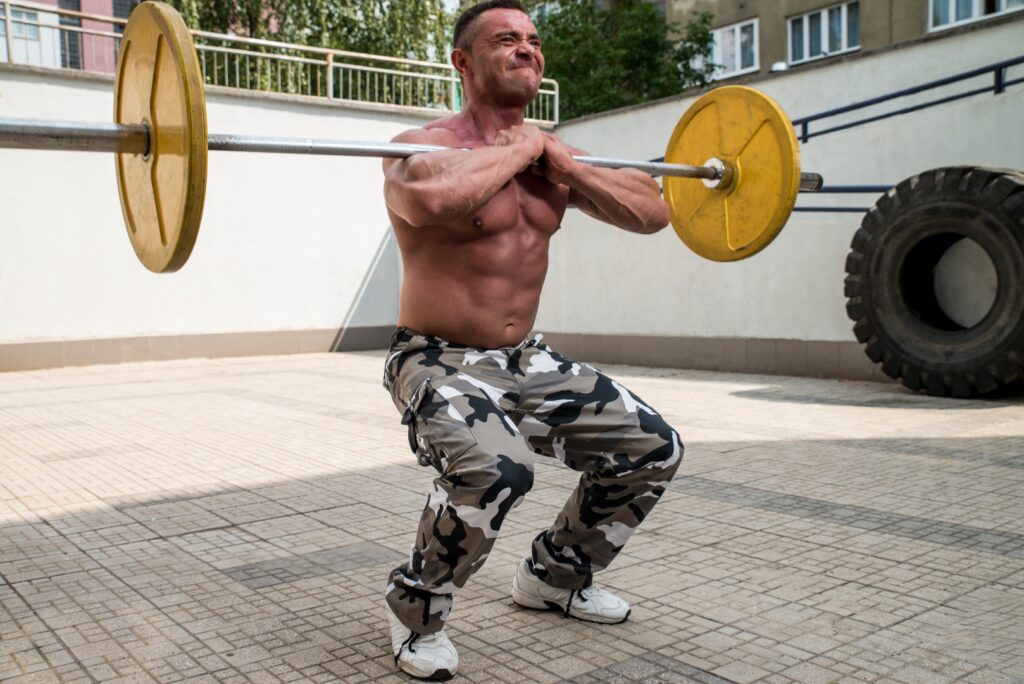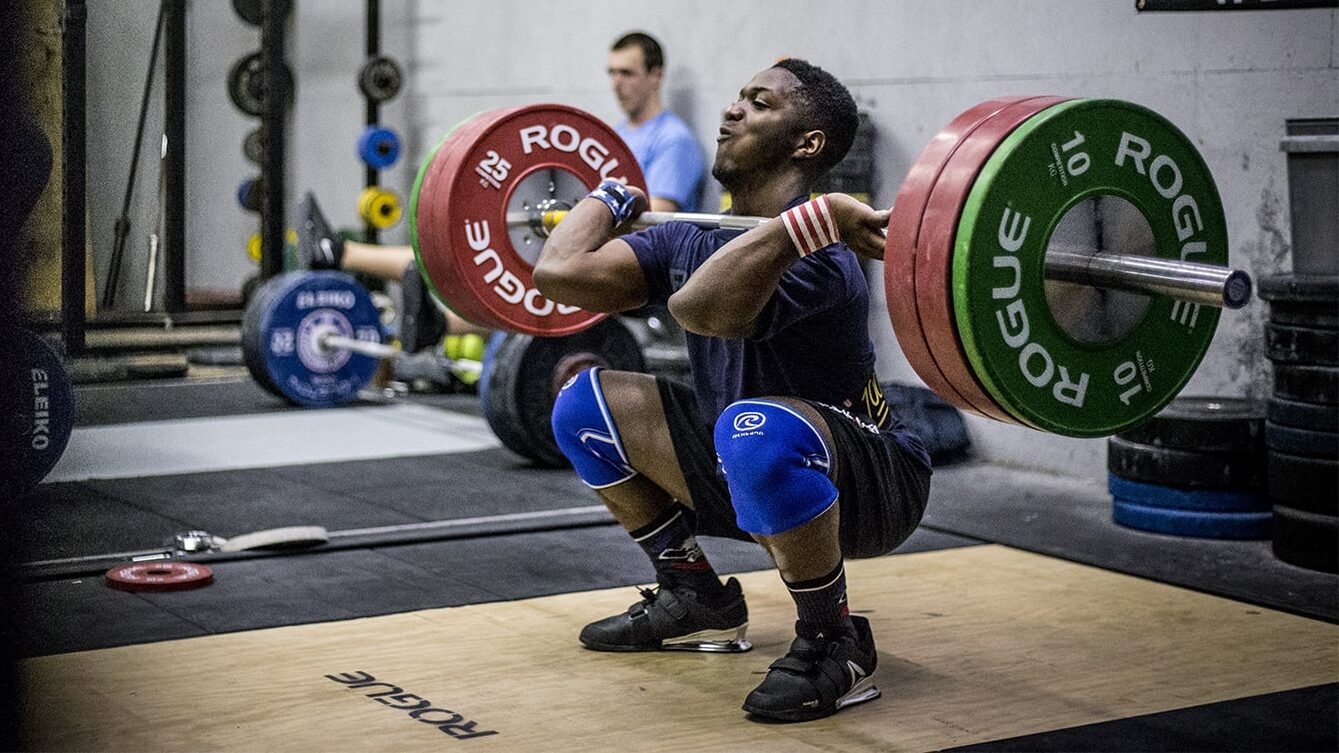The center knurl of a barbell is the rough, textured area in the center of a barbell that provides extra grip during exercises like squats and cleans.
It’s designed to help prevent the bar from slipping out of your hands or sliding down your back, which can be dangerous and limit your progress.
But what makes center knurling different from regular knurling on a barbell, and how do you know if it’s right for you?
Let’s dive in and explore the benefits, features, and drawbacks of this unique feature.
On This Page
What Is Center Knurling?
Center knurling is a feature found on barbells that offers several advantages for lifters. It refers to the rough, textured strip that runs down the center of the barbell shaft.
The purpose of center knurling is to provide an enhanced grip and prevent the barbell from slipping during exercises.
This feature becomes particularly important when performing exercises like squats and cleans.
With a center knurl, the rough texture acts as a grip enhancer, reducing the likelihood of the barbell shifting or sliding during lifts.

This stability ensures proper form and alignment, minimizing the risk of injuries that could occur due to the barbell slipping out of the hands.
Another advantage of center knurling is its suitability for heavy lifting. When you’re working with substantial weights, maintaining a firm grip becomes crucial for executing lifts effectively.
The aggressive nature of the center knurl assists in securely gripping the barbell, allowing you to focus on your technique and maximize your lifting potential.
While center knurling offers numerous benefits, it’s important to note that individual preferences may vary.
Some lifters may find the aggressive texture uncomfortable, especially if the barbell rests directly on their skin during certain exercises.
Benefits Of The Center Knurl
When it comes to lifting heavy weights, having a good grip is essential.
The center knurl helps me achieve a better grip and control over the barbell, especially during exercises like squats, deadlifts, and bench press.
With enhanced grip and control comes improved performance in heavy lifts. This allows me to push myself to greater limits.
Improved Grip and Control
One of the standout benefits of center knurling is the significant improvement it offers in grip and control during your weightlifting sessions.
The rough and textured nature of the center knurl helps prevent the barbell from slipping around on your upper back.
Whether you’re a powerlifter, weightlifter, or fitness enthusiast, the improved grip and stability provided by the center knurl can significantly enhance your lifting performance.
RELATED – The Best Powerlifting Barbell For Your Garage Gym
Better Bar Alignment
Aligning the barbell with the center knurl allows for a balanced distribution of weight across your shoulders, upper back, and hands.
When the barbell is centered correctly, it helps maintain a neutral position, promoting a more efficient transfer of force during lifts.
This alignment is particularly crucial in movements like squats, where an uneven distribution of weight can lead to issues such as excessive forward lean or lateral tilting, compromising your form and potentially increasing the risk of injury.
This symmetrical hand placement helps maintain proper alignment of the wrists, elbows, and shoulders, which is crucial for generating maximum power and minimizing the risk of joint stress or strain.
By aligning the barbell with the center knurling, you create a solid foundation for executing lifts with precision and stability.
Drawbacks Of The Center Knurl
While the center knurl on a barbell can provide multiple benefits, it’s essential to consider the potential drawbacks it may have on your lifting experience.
Discomfort during high-repetition workouts
The repetitive contact between the knurling and your skin during multiple sets and repetitions can lead to irritation or mild abrasions.

This becomes more noticeable in positions like the front rack during exercises such as front squats or cleans. The constant friction against the knurl can be unpleasant and distracting, hindering focus and performance.
Discomfort when lifting without a shirt
Lifting shirtless exposes bare skin to the direct contact of the knurling, causing discomfort and potential irritation.

The coarse texture of the knurling can feel abrasive against the skin, particularly during exercises that involve prolonged contact with the body, like squats, cleans, or front rack positions.
That being said, you shouldn’t be lifting without a shirt on anyways.
Center Knurl Vs No Center Knurl
When selecting a barbell, one important consideration is whether to opt for a barbell with a center knurl or without it.
Both options have their merits, and understanding the differences can help you make an informed decision based on your specific training goals and preferences.
Barbells with a center knurl provide enhanced grip and stability. The textured surface created by the center knurl offers improved traction, especially during exercises like squats and cleans.
The knurling assists in preventing your hands from slipping, allowing you to focus on your technique and lift heavier weights with confidence.

The center knurl also serves as a guide, helping you maintain consistent hand placement for precise and controlled lifts. This feature is particularly beneficial for Olympic lifts and movements that require dynamic control.
However, it’s worth noting that the knurling may cause discomfort during high-repetition workouts or when lifting without a shirt, as the coarse texture can create friction against the skin.
On the other hand, barbells without a center knurl offer a smoother, more consistent grip throughout the bar.
Some lifters may prefer this option, as it allows for greater comfort, especially during high-repetition workouts or when performing exercises that involve prolonged contact with the body.
Additionally, barbells without center knurling are less likely to cause discomfort or irritation when lifting without a shirt.

However, it’s important to consider that without center knurling, you may experience slightly reduced grip and stability compared to barbells with a center knurl, especially when lifting heavier weights or performing dynamic movements.
Ultimately, the choice between a barbell with a center knurl or without it depends on your individual preferences, training style, and comfort level.
If you prioritize enhanced grip and stability, particularly for Olympic lifts or heavy compound movements, a barbell with center knurling may be the ideal choice.
However, if you value a smoother, more consistent grip or prefer lifting without a shirt, a barbell without a center knurl may suit your needs better. Whichever option you choose, ensure that it aligns with your goals and allows you to perform exercises safely and effectively.
Conclusion
So, there you have it – the ins and outs of center knurling. As someone who’s been lifting for years, I can say that it really does come down to personal preference.
But what do you think, do you prefer barbells with a center knurling or without?
Let me know what you think in the comment section below, right now!
Until next time,
-Dante
Related: